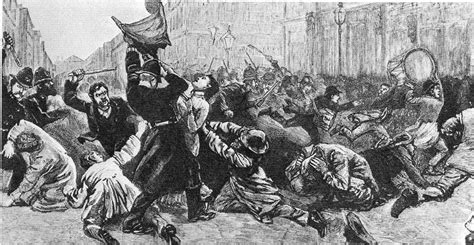What have we learned from the last round of party conferences before the next General Election? That the main policy debate between Labour, Conservatives and LibDems is about public spending cuts (where they will fall and how heavily rather than the justice of who will bear them or the necessity of having them now). No great surprise there. Or with the fact that the Tories clearly anticipate victory while Labour is still in denial about its forthcoming drubbing. Despite the fact that these events are now almost purely an expensive PR exercise, tightly controlled to promote the parties’ public image, they often (unwittingly?) reveal something useful.
The Labour Party conference provided, if anyone still needed it, confirmation that it is still trapped in the ‘New Labour’ mindset of social authoritarianism coupled with economic neo-liberalism. The party that excelled at being the bankers’ friend now finds itself in a bidding war to cut public services, pensions and jobs. Some will see this as merely a right-wing phase for the party and hope for a shift to the left after the election. Although this might turn out to be true, the idea that the Labour Party will then be either willing or capable of pursuing a socialist or even radical alternative seems to be based on a determined suspension of disbelief. Leaving aside the electoral prospects of a demoralised rump Labour Party, there are more fundamental obstacles. The Labour left has no more strategy for effecting change now than it had in the eighties – a vacuum that encouraged first Kinnock and then Blair and Brown to adopt the opposition’s agenda, and the Blairites are insisting on more ‘modernisation’. So is the party, whether ‘New’ or old, fit for purpose?
Paul Allender, in his book “What’s Wrong With Labour”, argued that Labour’s left and right (and even ‘New Labour’) share the party’s ethos of ‘labourism’ which precludes it from ever being an effective agent of radical change. Allender identified seven characteristics of this inherent labourism:
an absence of ideology;
a confused and confusing policy-making process;
‘pragmatism’ over principles;
aiming to represent ‘national’ rather than sectional interests;
relying on an emotional rather than rational appeal;
a lack of democracy and excessive bureaucracy;
a culture of defeatism.
His book catalogues clear evidence of all these since the party’s inception as the Labour Representation Committee in 1900. In addition both the left and Fabian traditions within the party share an overly centralising, statist approach to reform.
Given its slump in membership and public support, and the appalling record of its time in government, it is surely time to ask: what is the Labour Party for? What are its aims and objectives? The nearest it gets is the often cited claim to be in favour of greater social justice. But this is left so vague that it does not differentiate Labour from most other parties (probably only the BNP is explicitly in favour of less social justice). This exemplifies most of the seven sins of labourism. ‘Social justice’ is a muddled, undefined concept; it appeals mainly to emotion rather than reason; lack of ideology obscures the reasons for injustice and therefore the steps required to deal with it; by aiming to represent all interests the party undermines its own objectives in ending divisions and builds in defeat from the beginning. (BTW – any party that enthusiastically pursues building more prisons is aiming to contain social injustice, not remove it.)
For a clear and concise discussion of socialists’ objectives, and the opportunities and traps of using state institutions to achieve these, William Morris’s lecture on Communism, though written over 100 years ago, still enlightens and inspires.
